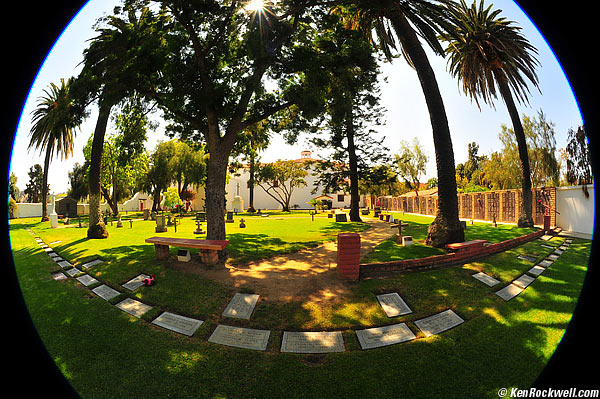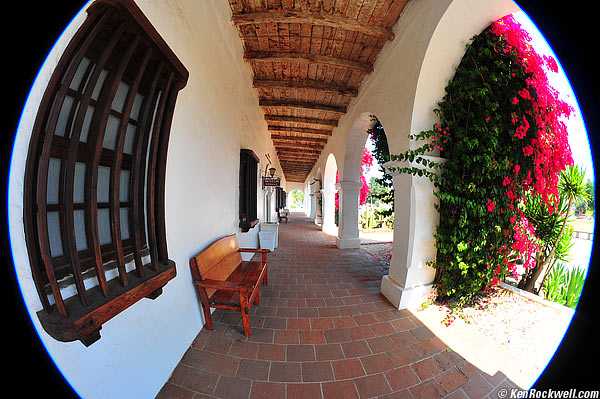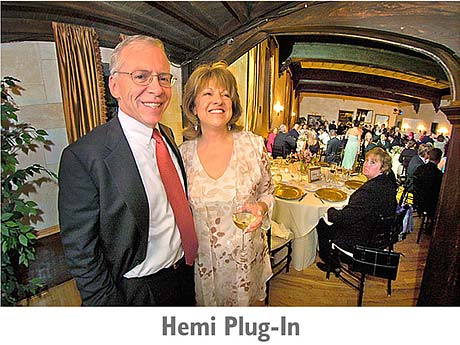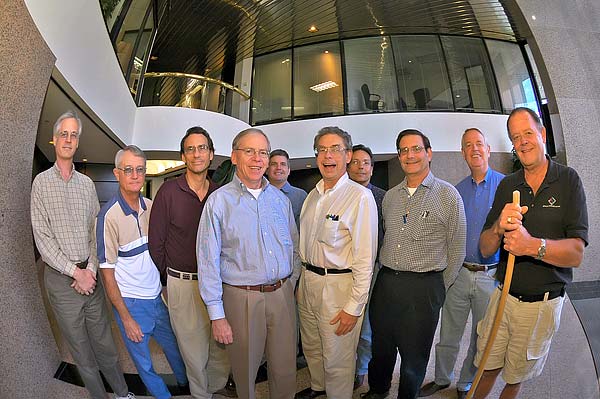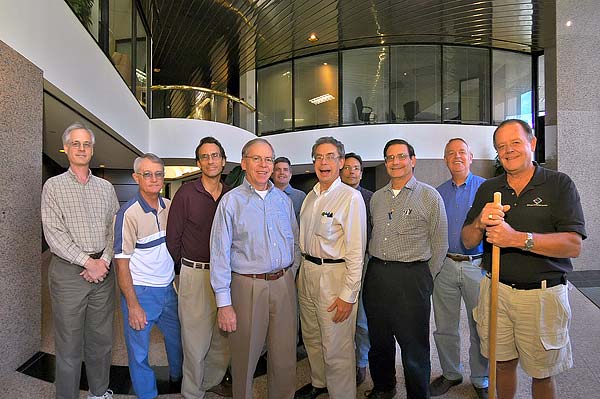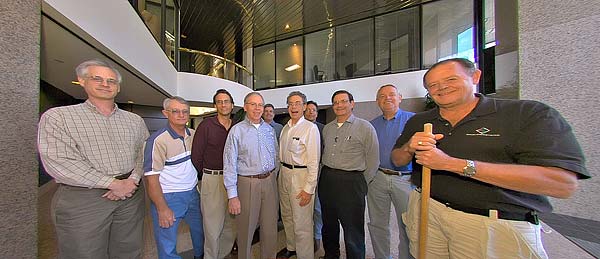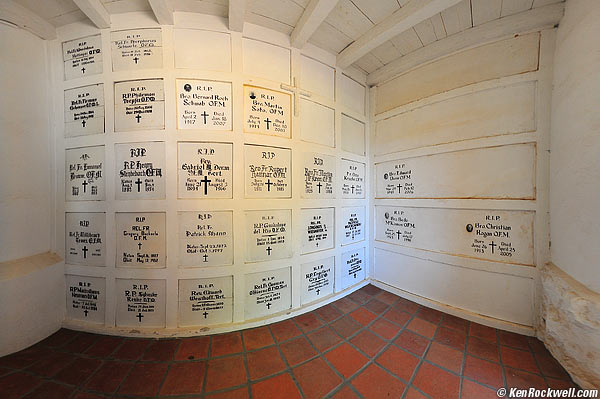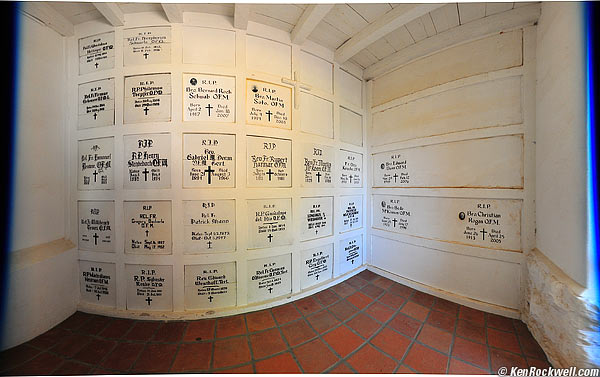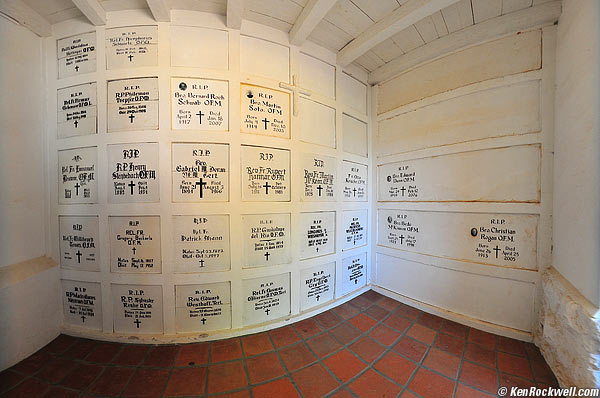Home Search Gallery How-To Books Links Workshops About Contact
Fisheye-Hemi Plug-In I wrote this in 2008. As of 2023 I have no idea where to get this software. Introduction Fishey-Hemi is a Photoshop (and Apple Aperture) plug-in which turns fisheye images into something useful. It pulls out the corners so the image feels more like a cylinder than a sphere. In other words, horizontal lines still curve after you use this plug-in, but curved vertical lines become straightened. Crypt. Roll mouse over to see effect of the Hemi plug-in. See how the vertical lines are straightened? You're seeing 180 degrees from left to right! These three examples are shot with the Nikkor 8mm f/2.8 fisheye on a DX camera. This turns silly fisheye shots into the equivalent of having shot them on a multi-thousand-dollar rotating panoramic film camera like the Noblex. Cemetery Palms. Roll mouse over to see effect of the Hemi plug-in.
Franciscan Mission. Roll mouse over to see effect of the Hemi plug-in.
People Photos For people photos, it removes distortion.
Wedding and group photographers rejoice! This is a Photoshop plug-in which converts fisheye-lens shots into something useful, especially for shots of people! Better still, it's only $29.99, bargain of the decade! It works on Photoshop (version 7+), Elements (version 2+) and PaintShop Pro (version 7+). Here's an even better example:
Original Image, 10.5mm fisheye and DSLR
Same image file after applying this plug-in filter.
What you'd get if you applied a rectilinear conversion to the original file.
This plug-in is from the geniuses who founded Applied Science Fiction (ASF). So is this photo - that's them in their lobby. ASF invented ICE, which saves me hours not having to get the dust out of film scans. They sold ASF to Kodak, who's done nothing with it, so these same guys started a new company called Image Trends, a very dull name for some very, very bright guys. The company's founder shoots a lot of weddings with fisheye lenses. He invented this to make his fisheye shots a lot more useful. Looks great, eh? These photos tell it all, no reason to read any more below. This new plug-in does a very clever new kind of conversion to unsqueeze fisheye images into something much more useful than the original fisheye image, or the superwide rectilinear conversions done by other software. Regular fisheye lenses squish everything together at the sides and corners, which looks stupid for people photos since it bends their bodies around. Regular superwide lenses, which I love for photos of things, stretch things out at the corners, which is also catastrophic for photos of people you're trying to flatter. This plug-in straightens the vertical lines in fisheye shots. It also keeps the image sharp, since its not stretching out the sides as rectilinear conversions do. The Hemi plug-in doesn't do the rectilinear conversion you see in the last example above. I wish it did; today you need other converters to do that.
What you Need Optimum You need a real fisheye lens. That's 10.5mm on Nikon DX SLR, or the Nikon 16mm AF on an FX or film SLR. On a full frame digital camera like the Canon 5D or 1Ds / 1Ds Mk II you need Canon's 15mm fisheye. There are no fisheyes mae by Canon for their smaller format cameras, although the Hemi plugin seems to have settings for using the 15mm on them. All these lenses fill the full rectangular frame. Minolta made the best 16mm fisheye I'd ever used, complete with built-in filters, for my manual focus Minolta 35mm film cameras. You also could get a Russian Zenitar 16mm, for most 35mm film cameras or Canon full-frame digital. It only costs about $170 - 200, brand-spanking new. It s not very good. If you're really crazy, go ahead and get a Nikkor 8mm fisheye as used in the examples at the top. Use the "Circle" option when used on a DX camera, which is how I made the three examples at the top. Hemi has no setting for doing anything with the full circular image you'd get on a full-frame camera with the 8mm; the first three examples above cut off the tops and bottoms of the circles.
Less Optimum You can play with external slip-on adaptors, door-viewer conversions and other fisheyes , but this converter plug-in isn't optimized for them.
Tip Keep your camera level, otherwise vertical lines will converge. If they do, I'd use the vertical perspective slider at the bottom of Photoshop CS2's lens correction filter. You get there via FILTER > Distort > Lens Correction.
This plugin is intended for people photos. I'm a hacker, and tweak it for use in architectural shots. These require more accuracy.
Direct results from "Circle" option run on Nikkor 8mm on DX camera. See how the vertical lines are pulled-out slightly towards the corners? As far as I can see, the "Circle" option is intended for use with the Sigma 8mm fisheye on Nikon DX. I used a real Nikkor 8mm fisheye, which has a different projection. Because the software is designed for using the cheaper Sigma 8mm which squishes the sides more, the software pulls out the sides a little too much with the Nikkor. I kid you not: fisheyes have more or less distortion, and the Sigma has more deviation from a perfect r = f theta projection than does the Nikkor. I get the best results by increasing the canvas size about 3% before I use the plugin. If I simply run the plugin with the 8mm Nikkor on a DX camera, the corners are pulled out a little too much. When you increase the canvas size slightly to fix this, you get some extra stuff at the sides which needs to be cropped. You then discover that bayonet mounts aren't designed for perfect concentricity. The 8mm Nikkor I used on a D300 wasn't really on-center. When this plugin stretches out the sides as far as it does to make them fit, small errors become big errors:
Skew of black bands are slight concentricity errors magnified by the plugin. For my samples of Nikkor 8mm f/2.8 AI and D300, I alter canvas sizes in two different ways to fix both these problems for this result shown also at the top.
Properly Hemied 8mm Nikkor Shot. 1.) Set Image > Canvas Size to 4,308 x 2,900 pixels. Click the top left tic-tac-toe option, so the canvas grows to the right and down, and hit OK. This puts the lens' optical center at the image center. 2.) Set Image > Canvas Size to 4,480 x 2,987 pixels. Leave the tic-tac-toe option in the middle and hit OK. This scales the image so we don't get the vertical lines pulled out too much towards the corners. 3.) Filter > Images Trends > Circle. 4.) Crop to taste.
PLUG If you find this as helpful as a book you might have had to buy or a workshop you may have had to take, feel free to help me write more. Thanks for reading! Ken |
Home Search Gallery How-To Books Links Workshops About Contact


